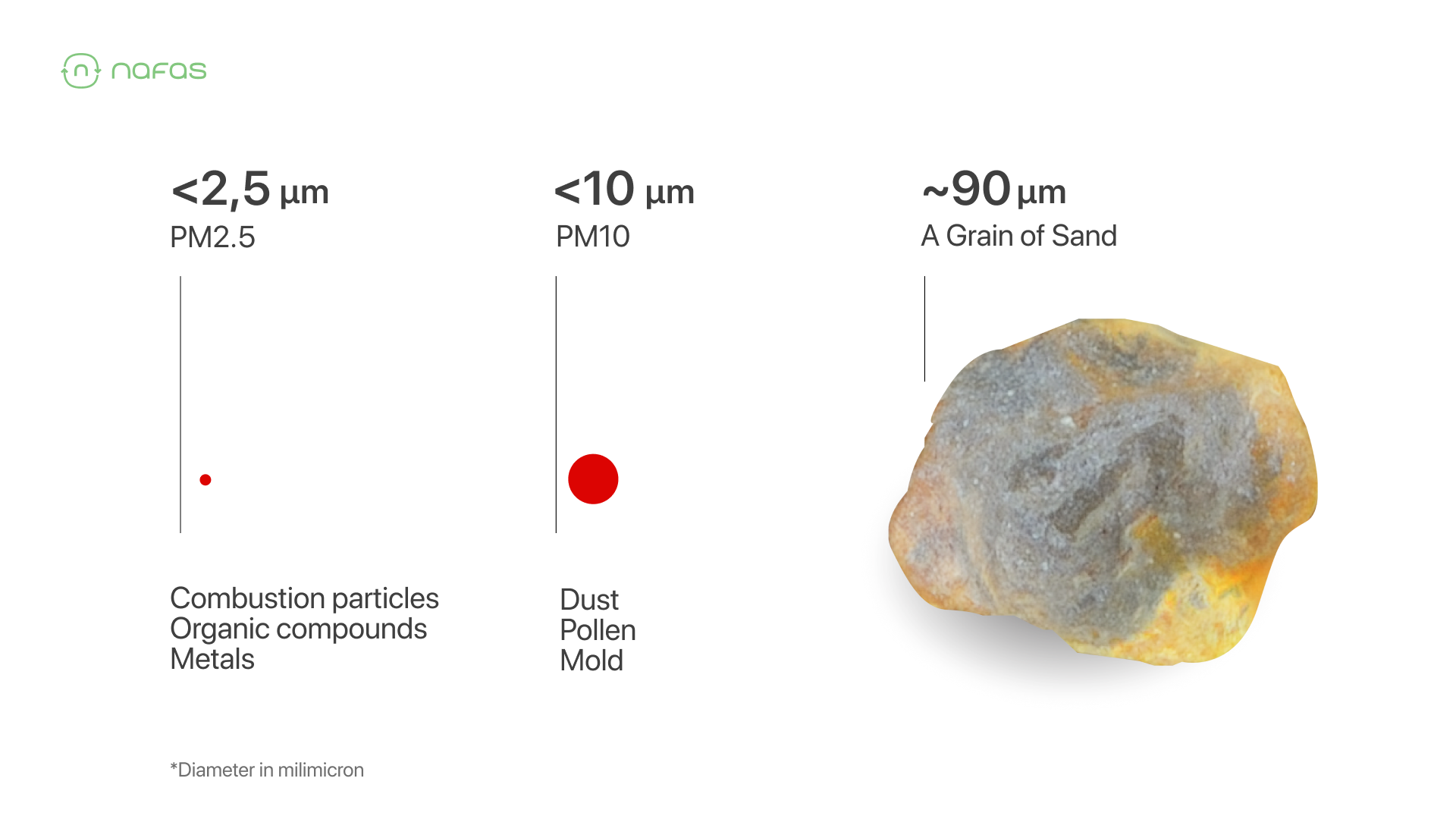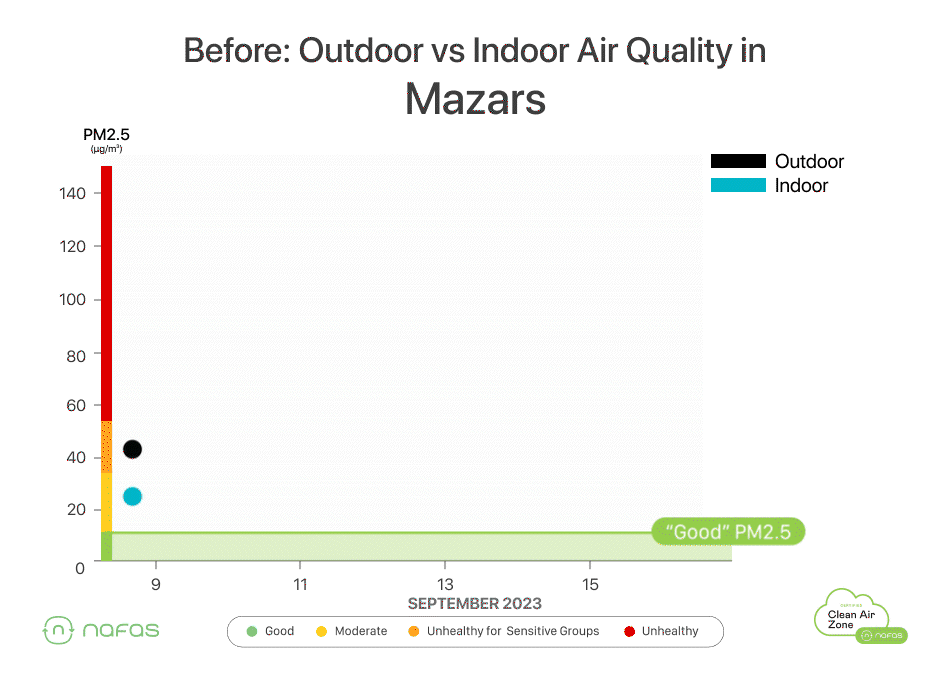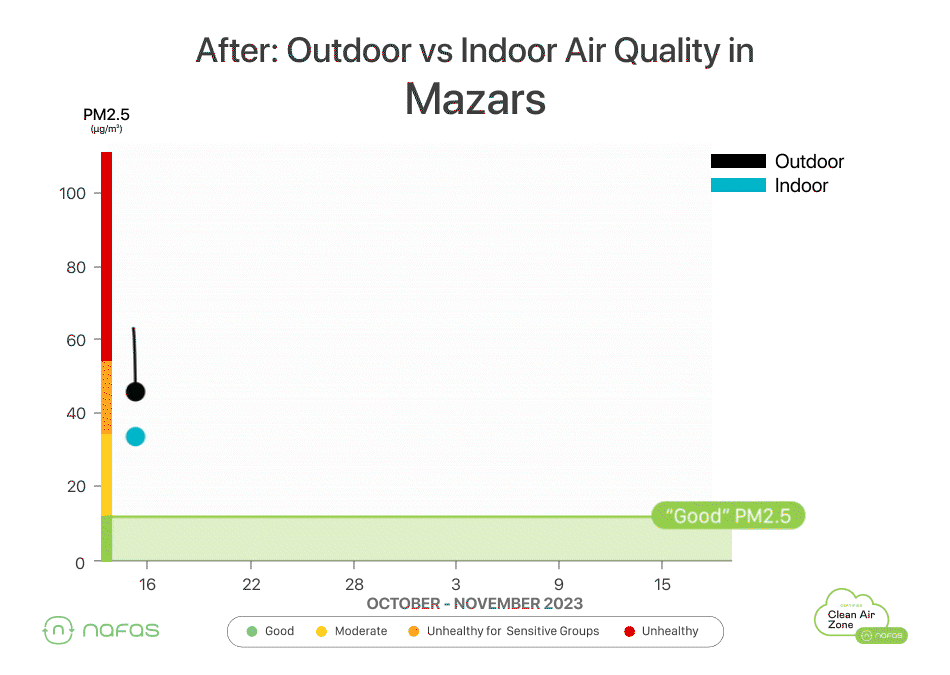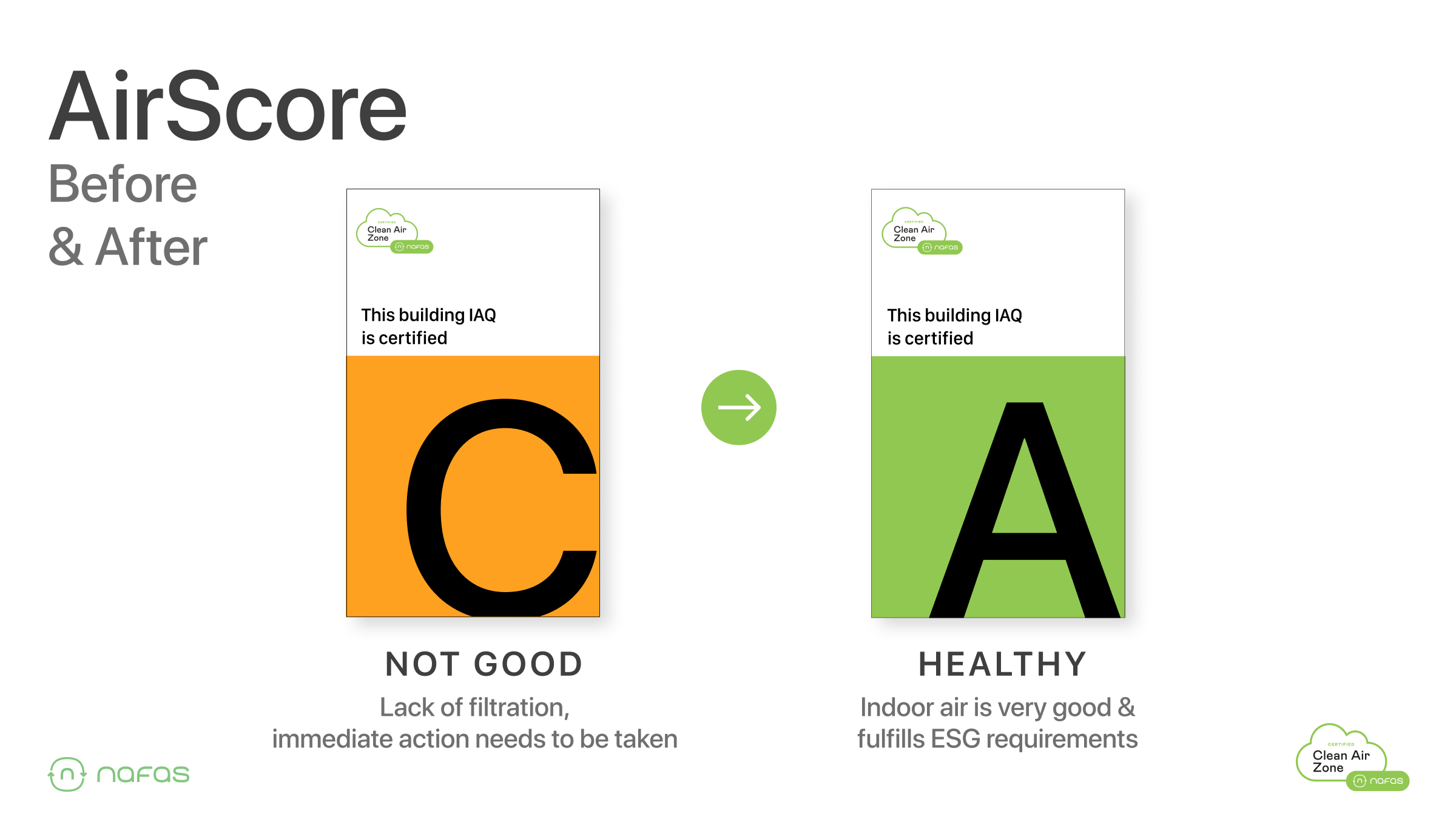LEARN / ARTICLE
CAZ Stories: Mazars Indonesia Achieves a 79% Reduction in Office Pollution
CAZ Stories is a series of articles highlighting the significant impact of Clean Air Zones on diagnosing and improving indoor air quality issues for businesses in Indonesia. For more insights, read our previous case studies:
- How Nafas Reduced Indoor Pollution by 70% at AC Ventures Office
- Nafas improved indoor air quality by 89,5% at Mighty Minds Preschool
- How Nafas reduced indoor pollution by 80% at a global shipping company
Air pollution in Jakarta remains a significant challenge. The city's outdoor air quality paints a concerning picture: as of 2023, the average PM2.5 concentration is 38 µg/m3. This level is more than double the Indonesian National Ambient Air Quality Standard's annual average limit for PM2.5, set at 15 µg/m3, and exceeds the World Health Organization's (WHO) recommended annual average by over seven times (5 µg/m3).
The WHO has identified Particulate Matter 2.5 (PM2.5) as extremely hazardous due to its fine particles' ability to penetrate deep into our lungs. PM2.5 represents a threat to the entire population, but especially to vulnerable groups such as children under five and adults over sixty.

Based on the diagnostic tests run by the Nafas team, it is obvious that the leakage level of PM2.5 pollution from outdoor inside the building is up to 100%. It is very concerning, especially for people who live in the high pollution level like Jakarta.
A recent article by Nafas, titled "How Indoor Air Pollution Impacts Performance in Offices," highlights the significant impact of indoor air pollution on workforce productivity. Pollutants from outdoor sources can deteriorate air quality in various indoor spaces such as offices, gyms, schools, and homes.
How PM2.5 Affects Productivity and Cognitive Test
In recent years, there has been a surge in research examining the impact of the built environment on human performance. Dr. Joseph Allen, founder of the Harvard Healthy Buildings Institute at the T.H. Chan School of Public Health, has led numerous studies investigating how indoor environments can adversely affect our health.
The 2021 COGFx study, which examined the effects of indoor air quality on the cognitive performance of office workers in countries including Mexico, India, Thailand, the US, the UK, and China, yielded concerning findings. It was found that when PM2.5 levels exceeded 12 µg/m3, there was a decline in performance in four out of five cognitive tasks among office workers.
A 2016 study by the University of Southern California presented similar conclusions but in a factory setting. It revealed that for every 10 µg/m3 increase in PM2.5 concentrations above a baseline of 15 µg/m3, productivity dropped by 6%.
To address these air quality concerns and foster a healthier workplace, Nafas has partnered with Mazars Indonesia. Their goal is to enhance indoor air quality at their office in Jakarta, thereby creating a safer and more health-conducive work environment.
The Challenge: Unhealthy air quality in the Mazars Indonesia Office
Nafas, using cloud-connected air quality monitors, gathered comprehensive data on PM2.5, CO2, temperature, and humidity levels within the Mazars Indonesia office. Initial tests uncovered a worrying reality: the indoor air quality was nearly as detrimental as the outdoor air.
To fully understand the extent of the issue, we first analyzed areas that were not yet designated as Clean Air Zones. Upon detailed examination, it became clear that the indoor air quality (indicated by the blue line) consistently remained above the PM2.5 threshold of 12 µg/m3 set by Dr. Joseph Allen, founder of the Harvard Healthy Buildings Institute at the T.H. Chan School of Public Health. This significant difference in air quality was evident throughout the entire week.
To grasp the full scale of this issue, our analysis began with areas not yet designated as Clean Air Zones. A thorough examination revealed that indoor air quality (marked by a blue line on our charts) consistently exceeded the PM2.5 safety threshold of 12 µg/m3, as set by Dr. Joseph Allen of the Harvard Healthy Buildings Institute. This significant disparity in air quality was apparent throughout the week, indicating a persistent problem.

After conducting a detailed analysis of the weekly data, it was observed that the indoor PM2.5 levels during working hours consistently exceeded the recommended limit of 12 µg/m3, with a monthly average reaching 34 µg/m3.
The existing filtration system in this building is capable of reducing some of the external pollutants. However, there is a need for additional intervention in the form of monitoring systems and air purifiers during working hours.

The final Nafas AirScore assigned to this building was a 'C', signaling that the office's current filtration system is inadequate. This rating underscores the urgent need for substantial improvements to ensure a healthy and safe working environment.

The Solution: Creating a Clean Air Zone at Mazars Indonesia's Office
In response to the challenge of poor indoor air quality in pollution-prone cities such as Jakarta, Nafas has designed an innovative system called Clean Air Zones. This ecosystem is tailored to sustain healthy indoor air quality during business hours. It achieves this through a comprehensive approach that includes measurement, purification, certification, and data-driven programs to engage employees. What makes this solution particularly accessible is its no initial investment model combined with a subscription-based format, making the improvement of office air quality both straightforward and feasible.

Mazars Indonesia's office recently becoming a designated Clean Air Zone. This pioneering initiative, in collaboration with Nafas, led to a noticeable improvement in the indoor air quality.
Moreover, the system functions autonomously, eliminating the need for extra managerial oversight or any upfront investment. This ease of implementation underscores the system’s practicality and efficiency.
The Result
Post-implementation, the air quality within Mazars Indonesia's office during operational hours significantly improved. The PM2.5 levels dropped to below 12 µg/m3, with the monthly average plummeting from 34 µg/m3 to 7 µg/m3. This represents a nearly fivefold improvement compared to the outdoor air quality, marking a substantial enhancement in the working environment.

Employees in the Clean Air Zone office at Mazars Indonesia have consistently enjoyed healthy air quality levels during operational hours.

Over a month, the air quality inside the Mazars Indonesia office consistently earned a 'Good' rating, resulting in an upgrade of its AirScore from 'C' to 'A.' This significant improvement reflects the effectiveness of the Clean Air Zone in maintaining a healthy and productive work environment.

The Monthly Report
As part of the data-driven Clean Air Zone service, Mazars Indonesia benefits from monthly reports that detail ongoing air quality metrics. These reports are extremely valuable, providing management, employees, and staff with regular updates about the air quality in their workplace.
An example report below illustrates the kind of comprehensive information Mazars Indonesia regularly receives:

Becoming a Clean Air Zone is So Easy
Interested in ensuring healthy air quality in your office, gym, school, or home at all times? Feel free to contact us at [email protected] or click the link below. Let's join our mission to make clean air the standard in our offices!
